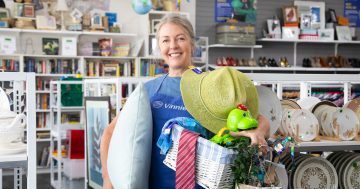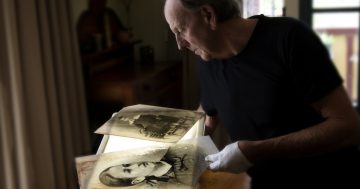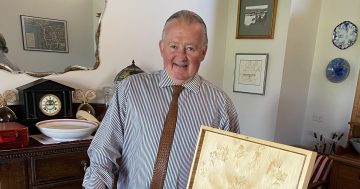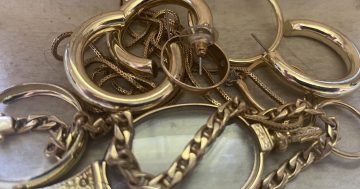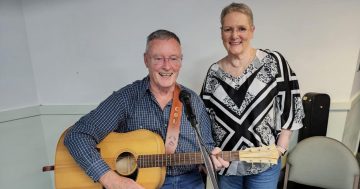
This frame of ropes was donated to a Vinnies op shop and, before it goes on sale, they’d love to know if anyone can help navigate a little of its history. Photo: Sally Hopman.
Amid the piles of used clothes, china and books in the Vinnies op shop was, from the back, simply a large wooden frame. It had a bit of age to it and, logically, we were to discover later, it had suffered a little water damage.
It was a frame, measuring 58cm by 42cm, showing examples of what looked to be some of the most intricate rope knots ever seen off a naval vessel.
We’re not just talking slipknots here. We’re talking double mastheads, a carrick bend, a clove hitch and something called a Turk’s Head. There were running bowlines, chain sennits – you probably don’t know this, but if you made daisy chains as a kid you have already mastered a chain sennit – sheets of all kinds (except the ones you find on a bed) and lots of block lines representing riggers.
Each of the tiny ropes had a plaque attached nearby telling you what it was, although some needed their own dictionary to translate for us “land-lubbers.” Each was nothing short of immaculate – neatly placed on the frame, spaced evenly – and there was even a lifebuoy in the centre of the picture to make sure everything remained safe.
Our thorough investigation into what was behind this donation to Vinnies took us right to the top of the Royal Australian Navy. Well, to a friend around the corner who has been a submariner most of his working life and who likes to be helpful when he comes up for air.
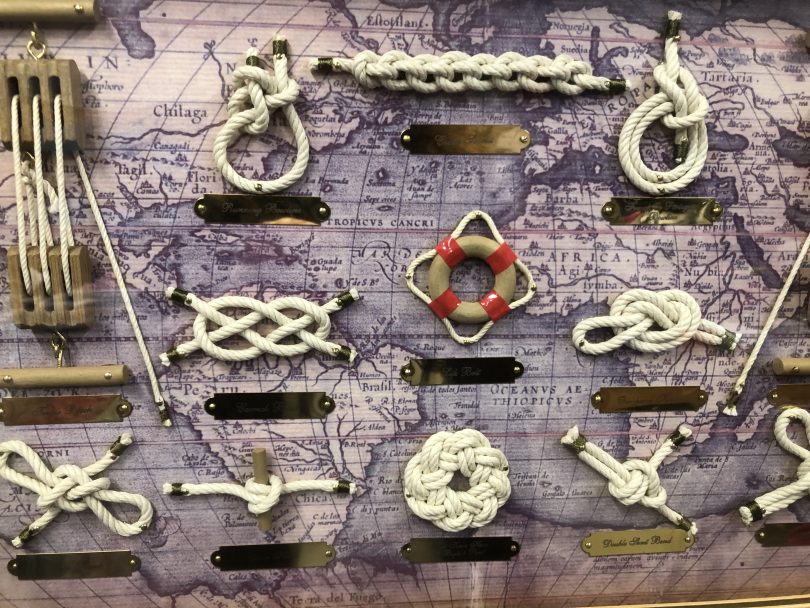
Close-up of some of the ropes featured on the display frame. It also includes examples of rigging work – and for safety’s sake, a lifebuoy. Photo: Sally Hopman.
We wanted to know his expert opinion, whether this was something sailors had to do as part of an initiation test, perhaps, on their first night on board. Or maybe it was to stop themselves getting tangled up in bureaucratic red tape.
His expert opinion was that it was a presentation piece. Work that someone did to show others – maybe naval students – how things should really be done, or perhaps an examination to display skills, or even a farewell gift to a sailor.
He was mightily impressed – and not just because he’s spent most of his time underwater and is still getting used to dry things. He reckoned it was clearly a special piece, not something he had seen often.
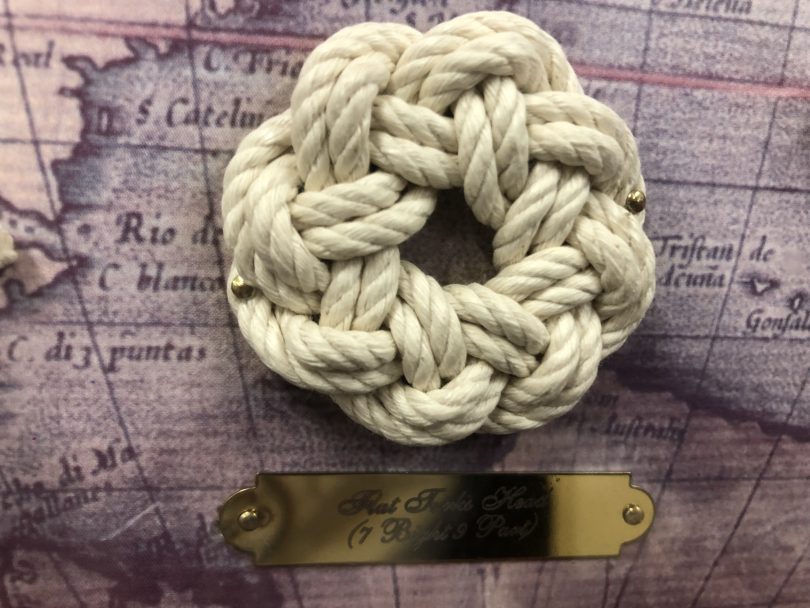
Close-up of the Turk’s Head rope. Photo: Sally Hopman.
The framed work was given to the Yass branch of the St Vincent de Paul Society and they will sell it – but they’re very keen to find out more about it and, ideally, get it to its best home. Although Yass is not the most maritime of towns, the Vinnies folk would just like to know more about it.
So much work has clearly gone into it – from the polished brass tags that announce every piece, to the ancient map of the world that is used as its backing paper.
If you know anything about this one or similar pieces and why they were made, we’d love to hear from you.
Just email shopman@region.com.au and we’ll see what we can uncover from the depths of your knowledge.












